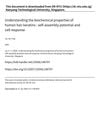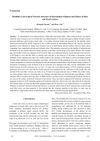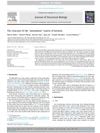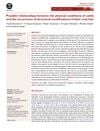Crosslinking Structure of Keratin: Number and Type of Crosslinks in Microstructures of Untreated and Potassium Cyanide Treated Human Hair
September 1996
in “
Journal of applied polymer science
”
TLDR Potassium cyanide treatment changes hair's disulfide bonds, making it more elastic.
The study investigated the crosslinking structure of keratin in human hair, focusing on the effects of potassium cyanide (KCN) treatment. It was found that KCN selectively converted disulfide (SS) bonds to monosulfide (S) crosslinks. The treated hair exhibited rubberlike elasticity when swollen in a specific solution. Analysis revealed that SS to S conversion occurred initially in low-sulfur (LS) proteins, while high-sulfur (HS) proteins showed faster SS bond scission. The study determined the percentage of different crosslinks in LS and HS proteins, with LS proteins having 27.0% intermolecular SS, 39.0% intermolecular X, and 34.0% intramolecular SS + X links, and HS proteins having 11.9% intermolecular SS and 88.1% intramolecular SS links. The total number of crosslinks in hair was 627 μmol/g, with LS and HS proteins contributing 13.8% and 86.2%, respectively.




